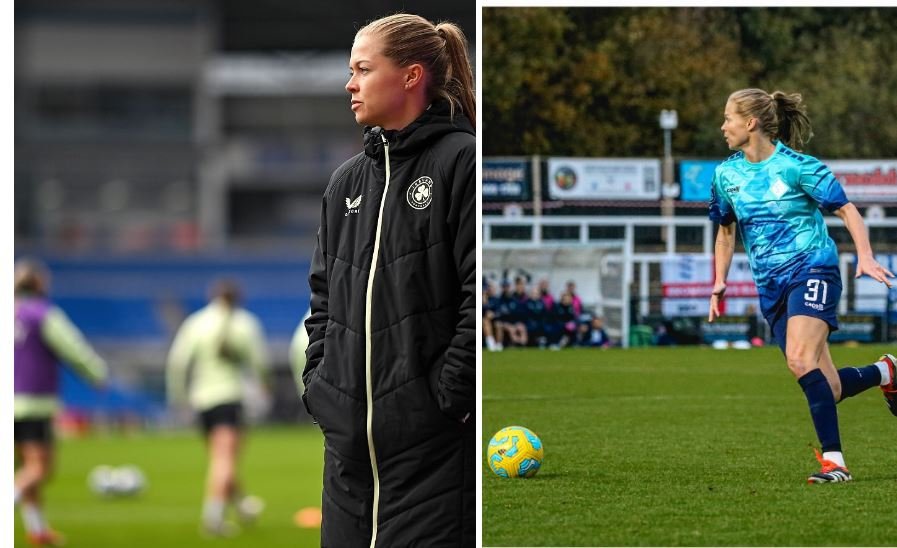
The public perception of Katie McCabe has changed dramatically over the years. She was once a fierce left-back who helped Arsenal win a continental championship, but now she is a well-known LGBTQ+ person who experiences both highs and lows. Her discreet breakup with Ruesha Littlejohn in May 2023 turned into more than a personal issue. Fans and the media alike were analyzing every gesture, caption, and subsequent public silence as it slowly developed into a social flashpoint.
McCabe and Littlejohn were frequently spotted together during their nearly four-year relationship, including off-field vacations, reciprocal celebrations, and club obligations that naturally conflicted with their Ireland responsibilities. Their relationship served as an empowering symbol for younger queer athletes during a time when visibility was important. However, faint indications of distance appeared by mid-2023. The posts on Instagram dwindled. Once shared, the red carpets were now walked alone.
| Name | Katie Alison McCabe |
|---|---|
| Date of Birth | September 21, 1995 |
| Nationality | Irish |
| Position | Full-back / Winger |
| Current Club | Arsenal Women (since 2015) |
| National Team | Republic of Ireland (Captain) |
| Ex-Girlfriend | Ruesha Littlejohn |
| Relationship Period | June 2019 – May 2023 |
| Current Partner | Caitlin Foord (Arsenal & Australia) |
| Major Trophies | Champions League, FA WSL, FA Cup |
| Career Highlight | First Irish woman nominated for Ballon d’Or (2023) |
The circumstances surrounding the breakup were just as complicated as the emotional toll it took. These were not two people quietly drifting apart. They were top-performing athletes who shared training sessions, locker rooms, and a network of overlapping professional relationships. The secrecy surrounding the change only heightened interest when McCabe later revealed a close relationship with Caitlin Foord, her teammate at Arsenal and Foord’s former national teammate.
The 2023 FIFA Women’s World Cup was a time when this emotional undercurrent was prominent. During a particularly heated pre-match handshake between Australia and Ireland, Ruesha Littlejohn purposefully skipped Foord. It might have seemed insignificant to people who were not familiar with the trio’s past. However, for fans who were paying close attention to the timeline, the message was clearly personal. Instantly shared on TikTok, Twitter, and fan forums, the moment said a lot without using words.
The story had changed by 2024, when Foord and McCabe made their relationship public, with McCabe lovingly writing “Amore” beneath Foord’s Rome photo. Now the focus was on their new romance, which had been quietly developed over time. Even though the public display was humorous, it added a level of emotional complexity for people who were aware of Littlejohn’s response during the World Cup. A triangle charged with residual tension had replaced the clean break.
This story reflects a wider change in how athletes deal with fame, emotion, and identity. It is particularly good at capturing the fuzziness of the boundaries between professional obligation and intimate relationships. Particularly in the past ten years, women’s football has promoted a particularly accepting culture around LGBTQ+ relationships. However, being open does not make dealing with heartbreak any easier. Not with every side-eye and non-handshake turning into a headline, or when it takes place in stadiums full of spectators and cameras.
Neither party has disclosed the specifics of their split in recent interviews; perhaps this lack of disclosure represents a professional boundary that should be respected. However, incidents such as Littlejohn being physically restrained from confronting Foord after the game imply that unfiltered emotion is still present. These are incredibly human responses that are both innately relatable and heightened by the media’s unwavering scrutiny.
The trio’s predicament is remarkably similar to many celebrity stories in that they involve awkward intersections between past relationships, present friendships, and shared career paths. It is similar to what we have observed with pop stars like Selena Gomez, Justin Bieber, Hailey, and Taylor Swift as well as Joe Alwyn. The difference is that these people train together, share hotel lobbies, and frequently play on the same field, so they can’t just unfollow each other on Instagram.
Nevertheless, despite conjecture, there is a noticeable improvement in the way that fans and the media interact with these athletes. Given the emotional toll that such visibility causes, many outlets and supporters have made sympathetic observations rather than using their identity as a weapon. The conversation has shifted away from being framed as gossip and toward polite curiosity and deliberate conversation about boundaries and emotional health.
Despite the personal commotion, McCabe’s trajectory has been steadily improving. She led Arsenal to a UEFA Champions League title in 2025, reaching a level that few Irish athletes have attained. She dominated, not just played. Her incredibly focused and clear performance served as a reminder to the audience that both professional excellence and personal heartbreak can coexist. A trailblazer in both sport and representation, she was also the first Irish woman to receive a nomination for the Ballon d’Or.
Foord has also maintained her performance consistency, playing a crucial role for Arsenal while juggling her international responsibilities with Australia. The couple, who frequently have teammates join them on their vacations, exudes a laid-back normalcy that seems well-earned and well-deserved.
Littlejohn perseveres in her career by concentrating on her craft and refraining from making any public remarks about the developing relationship story. Her decision to put professionalism ahead of publicity, even when the stakes are high, has been essentially her loudest statement.
What’s most inventive about all of this is how this story has changed the tone of sports media. Fans now care about the people who support them, not just goals and assists. And they don’t back down when those stories involve emotional messiness, love, and vulnerability. They lean in to comprehend rather than to pass judgment.
